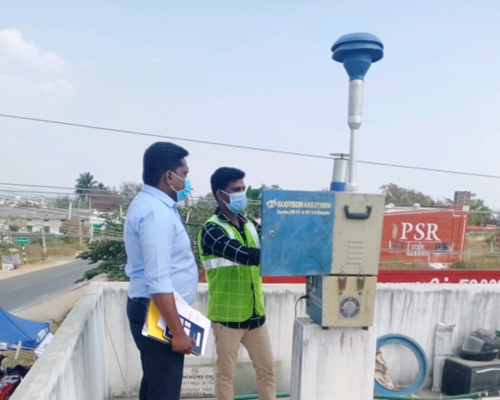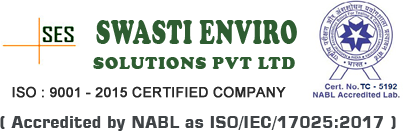Stack Monitoring in Perundurai

Established in the year 2010, in Chennai (Tamil Nadu, India), we, Swasti Enviro Solutions Private Limited, are known as the renowned service providers engaged in providing highly effective Environmental Testing & Analysis. Instead of this, we also offer Water Testing, Air Monitoring, and Soil Testing. We render these testing services as per the variegated needs of the clients. Highly known among customers for their accuracy, flexibility, timely execution, reliability, and client-centric approach, these testing services are widely used in various industries. We work with a team of highly skilled, highly qualified & experienced professionals who work with the help of their knowledge base and a strong sense that provides clients the best services.
We are the supreme company in Perundurai in the field of Stack Monitoring. For more information contact us or call +91 9445278726.
What is Stack Monitoring?
Stack monitoring is the technique of keeping an eye on the emissions leaving the stacks to control the number of pollutants released into the atmosphere. Carbon monoxide (CO), methane gas (CH4), oxides of sulfur and nitrogen (SOx and NOx), as well as hydrocarbon compounds, are the main pollutants that stacks emit.
How stack monitoring is performed?
The stack monitoring is done with the help of Gas Analyzers which are installed at the exhaust point.
Now, there are essentially two types of stack monitoring systems.
- In-Situ Measurement Method
- Extractive Dilution Method
The emission sensors are positioned at or inside the stack in an in-situ measuring system to monitor the emission parameters. In contrast, the extractive dilution approach sends a sample of the emission to analyzers that are located far from the emission stack.
Why is continuous monitoring of stack emission parameters important?
- The major authorities in charge of monitoring the emissions are accountable for taking the appropriate steps whenever the emission parameters go over their established limits in order to keep them there.
- A periodic framework is still used in several sectors to conduct the monitoring process.
- The inherent disadvantage of this method is that it prevents plant managers and other concerned executives from acting when necessary.
- The industries are subject to a fine from their country’s regulatory organizations due to delay or inappropriate management. The Central Pollution Control Board is the legal entity in India in charge of regulating the emission limits that must be adhered to by companies (CPCB).
Benefits of Stack Emission Testing
The process of evaluating such gases and their level of presence in the atmosphere from industries in order to meet environmental regulations is known as “stack emission testing.” Almost all production or operational units of a corporation have a chimney, also known as a stack. It releases contaminated or wasted gas into the atmosphere, adding to the pollution. The outcomes of this testing method help businesses maintain environmental compliance.
Why Stack Emission Testing is Necessary?
Pollutants released in the air need to be monitored in order to:
- Meet the environmental standards
- Collect data for Emission records
- Provide data to Environmental Impact Assessment Surveys
- Measure process efficiency and process control
- In the process of calibrating continuous emission monitors (CEMs)
- Analysis of the effectiveness of newly installed pollution control equipment or process changes
Our Profile
Point Us @ Google Maps
Visit our Google My Business Website


